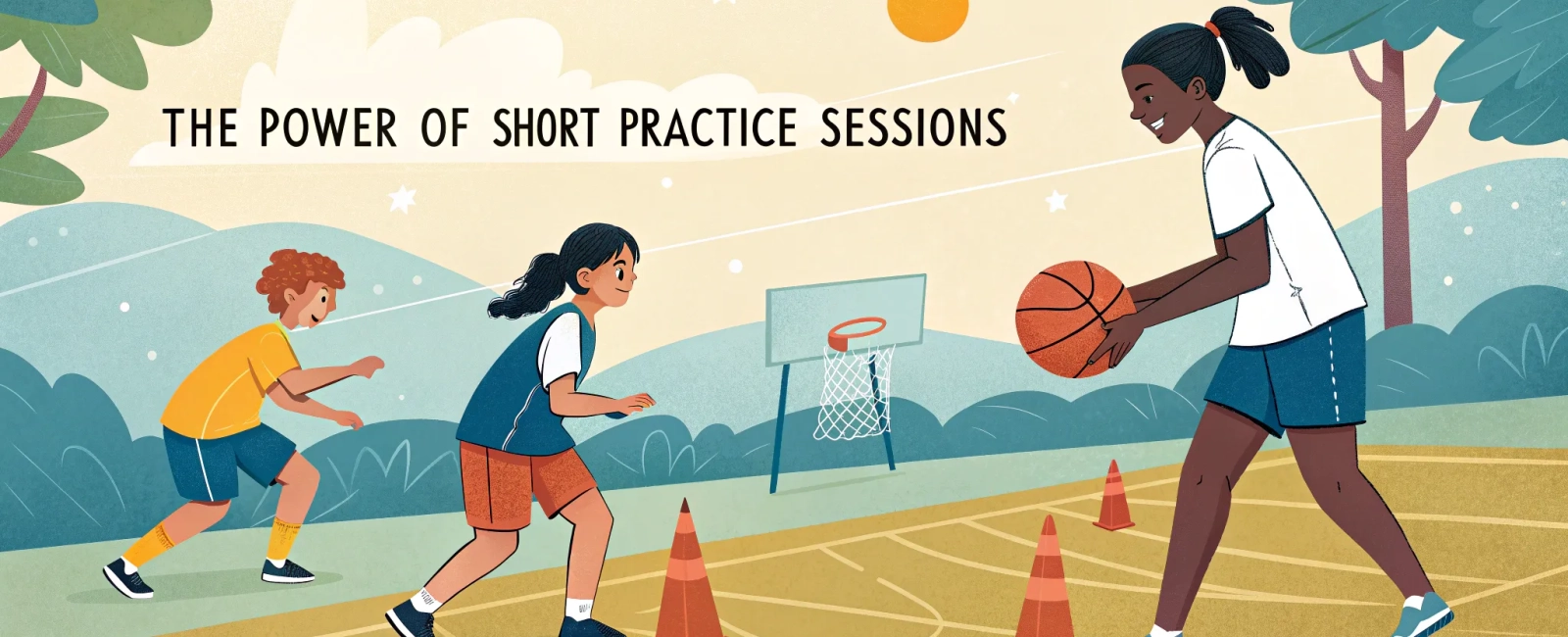Transform Your Skills: 15 Minutes to Game-Changing Results

We’ve all been there—watching our athletes struggle with a skill that seems just out of reach, wondering how to bridge that gap between potential and performance. I used to think that long, intensive training sessions were the only way to make real progress. But let me tell you, the biggest game-changer in my coaching journey has been the discovery of what a focused 15 minutes a day can do.
The Surprising Impact of Short, Daily Practice
It started almost by accident. One season, pressed for time and resources, we began incorporating brief, daily skill drills into our routine. To my astonishment, the athletes started showing noticeable improvements. Not over weeks or months, but within days. The secret? Consistency and focus.
Imagine asking your players to dedicate just a quarter of an hour each day to honing a specific skill. It doesn’t sound like much, but that regular practice compounds in ways that lengthy, sporadic sessions just can’t match. It’s like watering a plant a little every day instead of drenching it once a week—the steady attention makes all the difference.
Consistency Over Quantity: Why Less Can Be More
One of the biggest hurdles we face as coaches is time. Between school schedules, other sports, and life in general, finding hefty blocks of training time is tough. But squeezing in 15 minutes? That’s doable. And here’s the kicker—it works.
Regular, focused practice helps athletes:
- Build muscle memory more effectively
- Stay engaged without burning out
- See incremental progress that boosts confidence
I recall one of our players who struggled with free throws. We started a routine where he’d spend 15 minutes every day shooting from the line, focusing on technique rather than speed or quantity. Within a few weeks, his success rate skyrocketed. It wasn’t magic; it was the power of daily repetition.
Making the Most of Those 15 Minutes
Now, you might be thinking, “Great, but how do I make those minutes count?” Here’s what worked for us:
Identifying Key Skills
First, pinpoint the specific skills that need attention. Whether it’s dribbling with the non-dominant hand, perfecting a pitch, or nailing down defensive footwork, be laser-focused.
Creating Micro-Practice Sessions
Design drills that can be completed anywhere—even in a backyard or a small indoor space. The idea is to remove as many barriers as possible. For instance:
- Basketball: Dribble drills using cones or even water bottles.
- Soccer: Juggling or footwork patterns in a small area.
- Baseball/Softball: Swing practice with a tee or shadow swings without a ball.
Overcoming Obstacles
We all know that things like weather or lack of facilities can throw a wrench in our plans. But a bit of creativity goes a long way. Can’t get to the field? Use a wall for passing drills. Rainy day? Indoor agility exercises can keep skills sharp.
One athlete I worked with used the edge of a sidewalk to practice foot placement for hurdles. It wasn’t ideal, but it kept the muscle memory intact until we could get back on the track.
The Mental Edge: Harnessing the Power of Visualization
Physical practice is only part of the equation. Incorporating mental exercises can elevate an athlete’s game even further. We started encouraging our players to spend a few minutes visualizing successful performances.
Here’s how we did it:
- Guided Imagery Sessions: Having athletes close their eyes and vividly imagine executing a skill perfectly.
- Positive Reinforcement: Visualizing overcoming common mistakes or challenges.
This technique is more than just daydreaming. It’s a proven method that even top-tier athletes use to enhance performance. And it doesn’t require any special equipment—just a quiet space and a few minutes of focus.
One of our sprinters used this method to overcome a starting block hesitation. By routinely picturing a powerful, flawless start, he was able to translate that mental image into physical reality on race day.
Bringing It All Together: Transforming Performance Through Daily Practice
The beauty of this approach is in its simplicity. We’re not talking about overhauling entire training programs or investing in costly equipment. It’s about making the most of the resources we have and understanding that small, consistent efforts yield significant results.
As coaches, our goal is to foster growth, confidence, and a love for the game. By encouraging athletes to commit to just 15 minutes a day, we’re teaching them discipline, self-motivation, and the value of steady progress.
I’ve seen firsthand how this practice transforms not just individual skills but the entire dynamic of a team. Players start holding each other accountable, sharing tips, and celebrating each other’s improvements. It builds camaraderie and a collective drive to succeed.
Final Thoughts
If you’re looking for a way to boost your team’s performance without adding strain to everyone’s schedules, give this method a shot. Start small, be consistent, and watch as those daily 15 minutes become the catalyst for dramatic improvement.
We don’t always need more time; sometimes, we just need to use the time we have more effectively. And who knows? Those few minutes each day might just be the turning point from zero to hero for your athletes.
